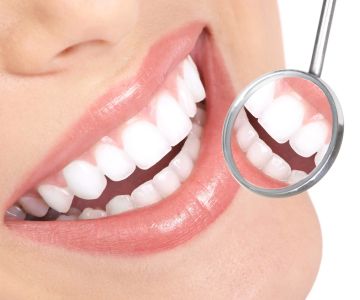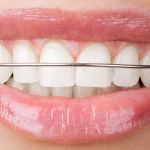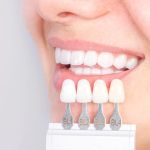Gum recession is a common oral health issue that often flies under the radar until it becomes severe. For many in the United States, the warning signs of gum recession can be subtle, yet the implications can be significant. But what exactly is gum recession, and why should you be concerned? In this informative piece provided by Dentistry Toothtruth, we aim to shine light on the signs of gum recession and what they mean for your overall dental health.
Understanding Gum Recession
Gum recession occurs when the margin of the gum tissue surrounding the teeth wears away or pulls back, exposing more of the tooth or its root. This can lead to pockets forming between the teeth and the gum line, creating a breeding ground for disease-causing bacteria. Receding gums are not only unsightly but can lead to serious issues such as tooth loss if not addressed timely.
Key Signs of Gum Recession
Recognizing the signs of gum recession early can save you from potential pain and expense down the line. One of the first indicators is tooth sensitivity. As the gum recedes, the roots of the teeth become exposed, resulting in heightened sensitivity to hot, cold, sweet, and acidic foods and beverages. If you find yourself wincing while eating or drinking particular items, it might be time to consider the health of your gums.
Another sign to watch for is visibly longer teeth. This is not an illusion; as the gums recede, they expose more of the tooth than normal, making them appear longer. In severe cases, this can affect not only aesthetics but also the function of your bite.
Implications of Ignoring Gum Recession
Neglecting the initial signs of gum recession can exacerbate the issue and lead to more severe dental health problems. If left untreated, gum recession can progress to gum disease, known as periodontitis, which can destroy the supporting structures of your teeth. According to the American Dental Association, untreated periodontitis is the leading cause of tooth loss in adults.
Besides the risk of tooth loss, gum recession can lead to oral health complications such as abscesses and infections. The exposed tooth roots are more susceptible to decay and damage, further compromising your dental health. Thus, paying prompt attention to the symptoms associated with gum recession is crucial.
The Role of Lifestyle and Genetics
Several factors can contribute to the development of gum recession, with lifestyle and genetics playing significant roles. Frequent and aggressive brushing, poor oral hygiene, smoking, and tobacco use have all been linked to accelerated gum wear. Furthermore, genetics may predispose certain individuals to gum disease irrespective of their oral health routine. Studies have shown that nearly 30% of the population may be genetically susceptible to gum disease, warranting higher awareness and preventive measures.
Taking Preventative and Remedial Action
Prevention is always better than cure. Practicing good oral hygiene, such as brushing with a soft-bristled toothbrush, flossing daily, and regular dental check-ups, can help prevent gum recession. For those already experiencing signs of gum recession, seeking advice from a dental professional about potential treatments such as scaling, root planing, or tissue grafts may be necessary.
Maintaining proactive habits like reducing sugar intake, quitting smoking, and using a desensitizing toothpaste are excellent complementary measures. Various techniques, including laser therapy, have shown promise in treating advanced cases of receded gums, by promoting tissue regeneration and reducing bacterial presence.
Conclusion
In summary, recognizing and understanding the signs of gum recession is vital for maintaining optimal oral health. The implications of ignoring these signs can be severe, leading to increased sensitivity, periodontal disease, and potential tooth loss. Through lifestyle modifications and regular dental care, you can mitigate risks and maintain a healthy smile. For more information and dental tips, visit Dentistry Toothtruth.
Remember, your gums are as important as your teeth when it comes to oral health. By staying informed and attentive to the signs of gum recession, you can preserve both function and aesthetics in your smile. Don’t hesitate to reach out to your dentist for personalized advice and treatment options tailored to your specific needs.







 WinningSmiles Custom Dentistry & Implant Center
WinningSmiles Custom Dentistry & Implant Center Crossroads Pediatric Dentistry
Crossroads Pediatric Dentistry Corona Hills Modern Dentistry and Orthodontics
Corona Hills Modern Dentistry and Orthodontics Ernstberger Orthodontics
Ernstberger Orthodontics Emergency Dental Help
Emergency Dental Help Shawn O'Berry DDS
Shawn O'Berry DDS The Importance of Oral Health Education During Pregnancy for a Healthy Pregnancy
The Importance of Oral Health Education During Pregnancy for a Healthy Pregnancy Why Skipping Dental Checkups Can Lead to Bigger Oral Health Problems
Why Skipping Dental Checkups Can Lead to Bigger Oral Health Problems Advantages of Porcelain Dental Restorations
Advantages of Porcelain Dental Restorations Best Tips for Brushing Your Teeth Properly for Healthy Gums: Essential Techniques for Oral Health
Best Tips for Brushing Your Teeth Properly for Healthy Gums: Essential Techniques for Oral Health How Can Diabetes Cause Tooth and Gum Problems? Preventing and Managing Oral Health Issues
How Can Diabetes Cause Tooth and Gum Problems? Preventing and Managing Oral Health Issues Healthy Habits for Promoting Good Oral Health and Hygiene: Tips for a Healthy Smile
Healthy Habits for Promoting Good Oral Health and Hygiene: Tips for a Healthy Smile